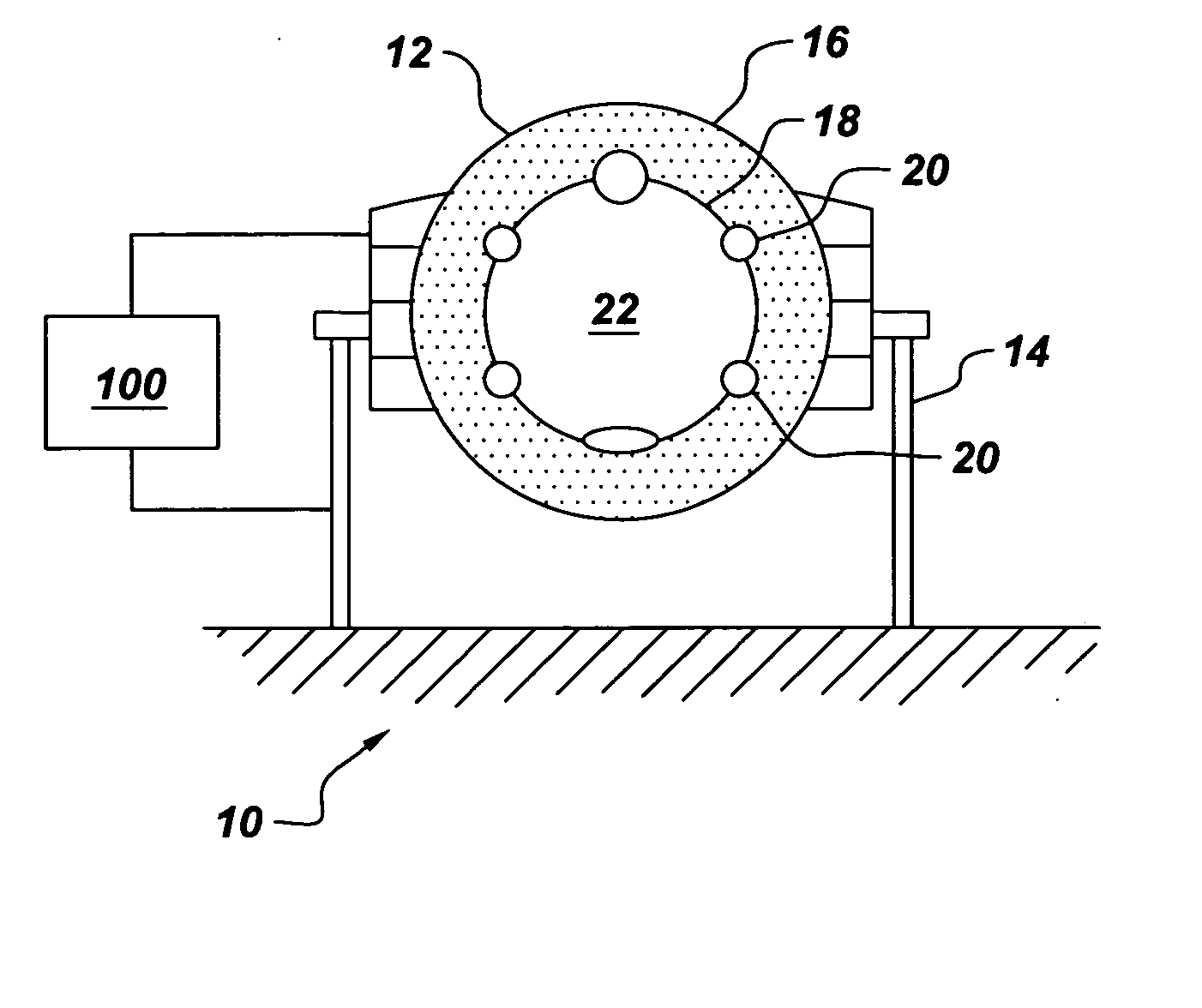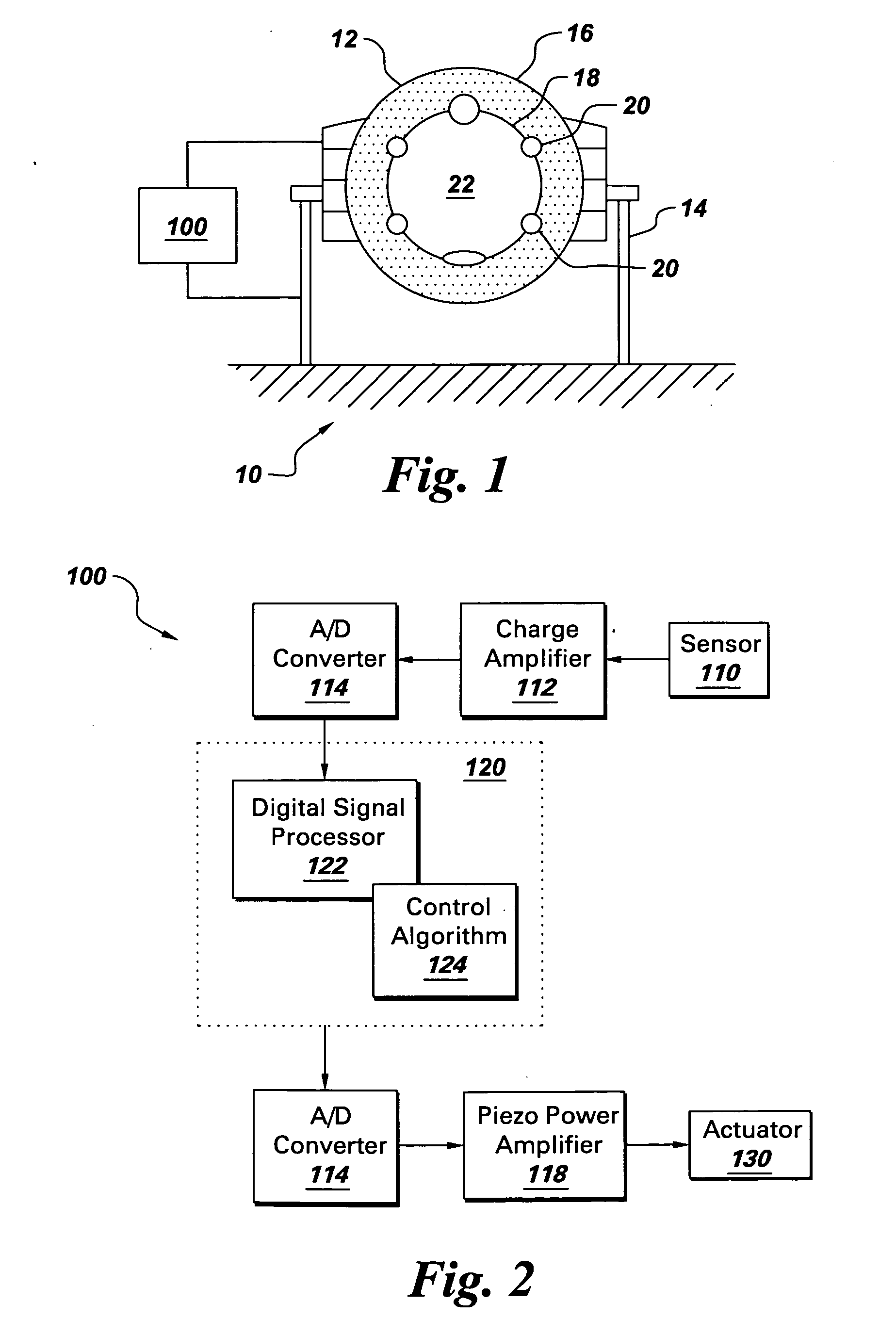Active vibration control in computed tomography systems
a computed tomography and vibration control technology, applied in the field of vibration control in computed tomography systems, can solve problems such as distortion of images, difficulty, and difficulty, and achieve undesirable vibration and distortion of images obtained
- Summary
- Abstract
- Description
- Claims
- Application Information
AI Technical Summary
Benefits of technology
Problems solved by technology
Method used
Image
Examples
Embodiment Construction
[0012]FIG. 1 is illustrates a CT system 10, having a gantry 12 mounted over a support frame 14, which is coupled to an active vibration control apparatus 100. The gantry is functional to expose a volume to radiation for imaging. The gantry typically includes a stationary base 16 mounted on the support frame, and a rotating base 18 is positioned inside the stationary base. Wherever used, the term “rotating gantry” will be understood to refer to the rotating base of the gantry. Further, the “geometric center” of the gantry is understood to refer to the geometric center of the radiation source and detector elements, and in most cases is the geometric center of the rotating base. The rotating base is mounted with various functional components 20 of the CT system, such as an X-ray source(s), detector array(s), computer modules, among others. These components can be viewed as masses lumped to the rotating base. The imaging volume 22 inside the rotating base is suitable for positioning an ...
PUM
 Login to View More
Login to View More Abstract
Description
Claims
Application Information
 Login to View More
Login to View More - R&D
- Intellectual Property
- Life Sciences
- Materials
- Tech Scout
- Unparalleled Data Quality
- Higher Quality Content
- 60% Fewer Hallucinations
Browse by: Latest US Patents, China's latest patents, Technical Efficacy Thesaurus, Application Domain, Technology Topic, Popular Technical Reports.
© 2025 PatSnap. All rights reserved.Legal|Privacy policy|Modern Slavery Act Transparency Statement|Sitemap|About US| Contact US: help@patsnap.com



